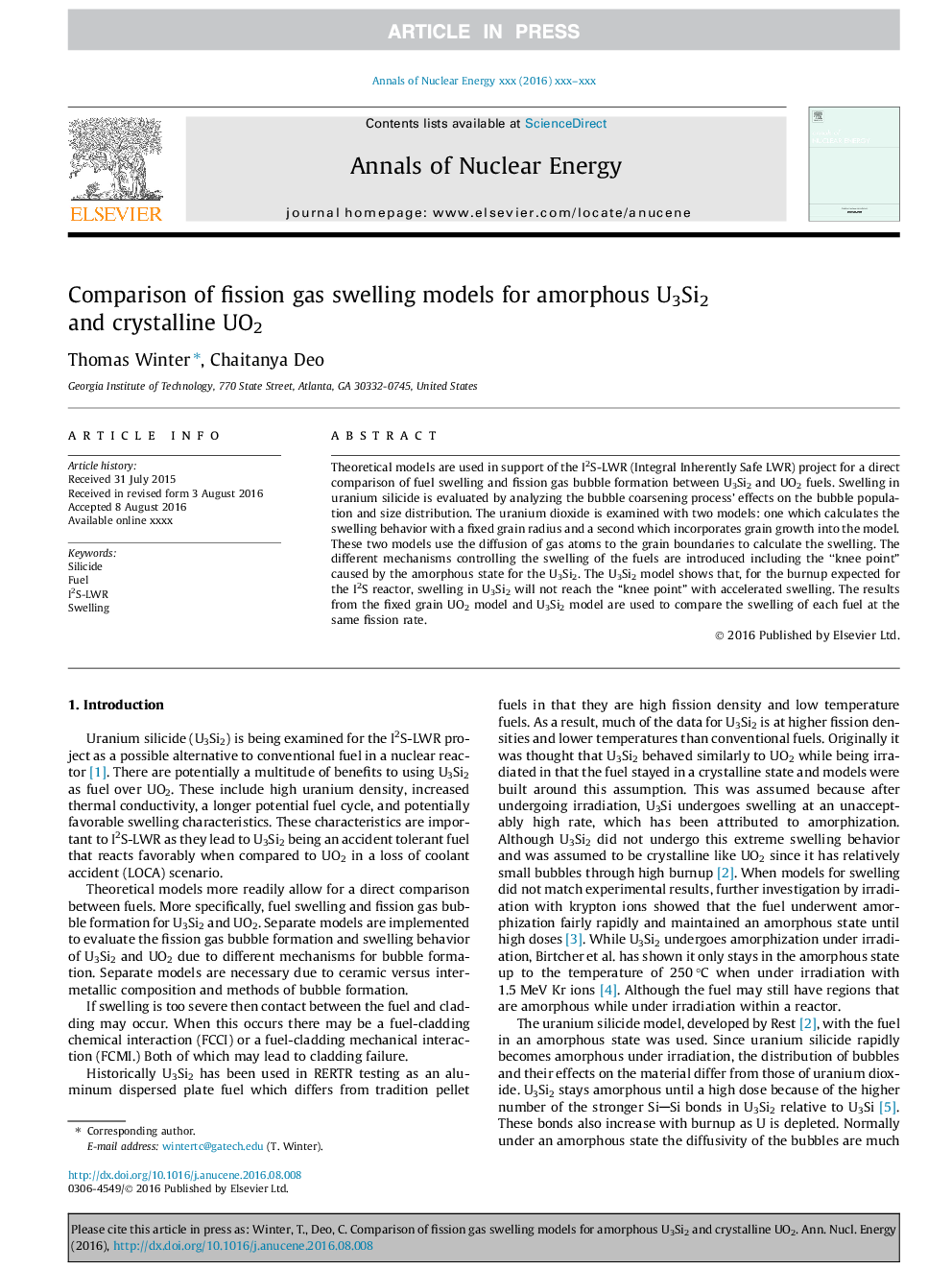| Article ID | Journal | Published Year | Pages | File Type |
|---|---|---|---|---|
| 5475014 | Annals of Nuclear Energy | 2017 | 11 Pages |
Abstract
Theoretical models are used in support of the I2S-LWR (Integral Inherently Safe LWR) project for a direct comparison of fuel swelling and fission gas bubble formation between U3Si2 and UO2 fuels. Swelling in uranium silicide is evaluated by analyzing the bubble coarsening process' effects on the bubble population and size distribution. The uranium dioxide is examined with two models: one which calculates the swelling behavior with a fixed grain radius and a second which incorporates grain growth into the model. These two models use the diffusion of gas atoms to the grain boundaries to calculate the swelling. The different mechanisms controlling the swelling of the fuels are introduced including the “knee point” caused by the amorphous state for the U3Si2. The U3Si2 model shows that, for the burnup expected for the I2S reactor, swelling in U3Si2 will not reach the “knee point” with accelerated swelling. The results from the fixed grain UO2 model and U3Si2 model are used to compare the swelling of each fuel at the same fission rate.
Related Topics
Physical Sciences and Engineering
Energy
Energy Engineering and Power Technology
Authors
Thomas Winter, Chaitanya Deo,
